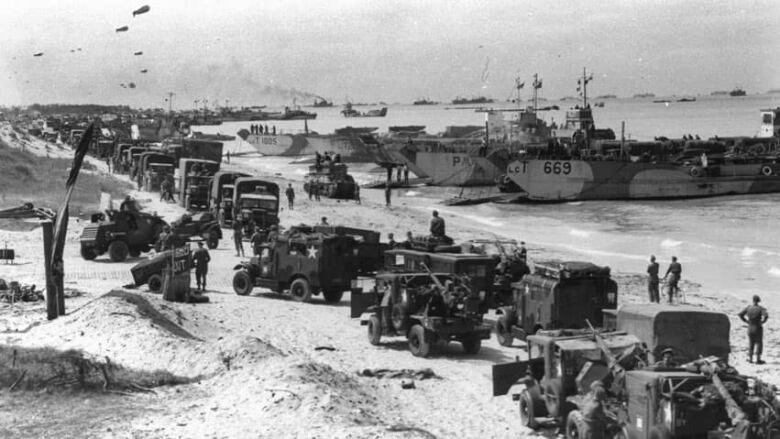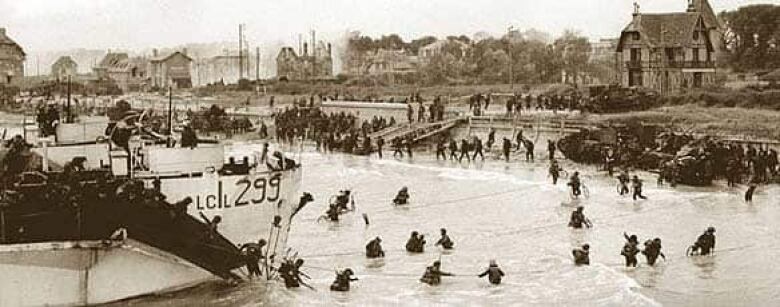D-Day: The allied invasion of Normandy

The sun was just coming up over the Normandy coast at about 5 a.m. on June 6, 1944 D-Day.
The military planners had given Canada a major role on D-Day: to take one of the five designated beaches where Allied forces were to land to begin the liberation of Europe from Nazi Germany.
The Americans had Utah and Omaha beaches in the west, then came the British at Gold, then the Canadians at Juno Beach and finally the British at Sword on the east.

The greatest seaborne invasion in history was aimed at 80 kilometres of mostly flat, sandy beach along the Normandy coast, west of the Seine River, east of the jutting Cotentin Peninsula. Canada's objective was right in the middle.
There were about 155,000 soldiers, 5,000 ships and landing craft, 50,000 vehicles and 11,000 planes set for the coming battle.
For Canada, 14,000 soldiers were to land on the beaches; another 450 were to drop behind enemy lines by parachute or glider. The Royal Canadian Navy supplied ships and about 10,000 sailors.
Lancaster bombers and Spitfire fighters from the Royal Canadian Air Force supported the invasion.

The Canadians who landed on Juno Beach were part of Britain's Second Army, under the command of British Lt. General Miles Dempsey, who had served in North Africa and Italy with the overall British commander, Bernard Montgomery. The Canadian assault forces were the Third Canadian Infantry Division, commanded by Major General R. F. Keller and the Second Canadian Armoured Brigade, with Brigadier R.A. Wyman in charge.
The units were from across the country; from east to west, from the North Nova Scotia Highlanders, to the Canadian Scottish from Victoria.
The bombardment of the beaches began at 6 a.m. Within an hour the lead landing craft were away from the ships.
Two hours later, the German defences at Juno Beach had been shattered and Canada had established the beachhead.













_(720p).jpg)


 OFFICIAL HD MUSIC VIDEO.jpg)
.jpg)



























































































